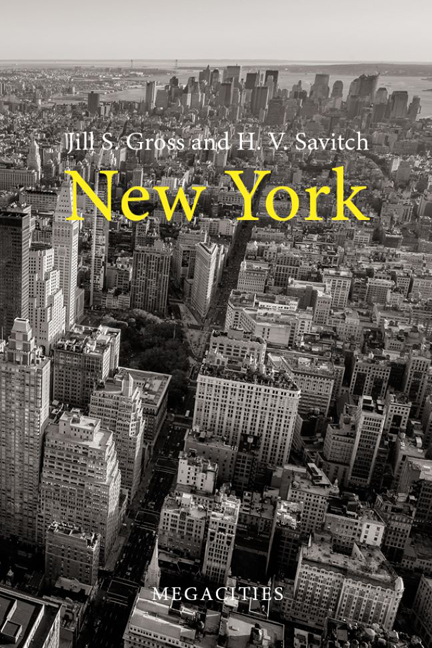Book contents
- Frontmatter
- Contents
- Preface and acknowledgements
- 1 Introduction: New York as a megacity
- 2 Crises, breakdowns and New York’s endurance
- 3 Building a global megacity: corporate- centred urban development and leadership
- 4 Expanded governance in the megacity
- 5 Neighbourhoods, diversification and gentrification in the megacity
- 6 Globalization in the megacity
- 7 Conclusions
- References
- Index
3 - Building a global megacity: corporate- centred urban development and leadership
Published online by Cambridge University Press: 20 January 2024
- Frontmatter
- Contents
- Preface and acknowledgements
- 1 Introduction: New York as a megacity
- 2 Crises, breakdowns and New York’s endurance
- 3 Building a global megacity: corporate- centred urban development and leadership
- 4 Expanded governance in the megacity
- 5 Neighbourhoods, diversification and gentrification in the megacity
- 6 Globalization in the megacity
- 7 Conclusions
- References
- Index
Summary
In this chapter we explore the ways in which leaders have endeavoured to use policy, planning, incentives and regulation to capitalize on these territorial features and manage the resultant tensions that growth brings to people and place (Kantor, Savitch & Haddock 2002). While there is no question that capital, or more specifically corporate interests, have long been viewed as fundamental to the fiscal health of the region, recent history reveals a more complex set of relationships underlying development decisions. Indeed, today it would appear that labour and civil society groups, undergirded by powerful left- wing political actors, have become a force to be reckoned with. Only time will tell if we are seeing a new phase of development in the megacity, a decentring of the growth machine, or perhaps a counterweight is pushing back in the form of an anti- growth collation advocating for people- centred development (Vogel & Swanstrom 1989).
The New York megacity represents a vast “strategic place in contemporary globalization” processes (Taylor et al. 2014: 3), where local leaders have endeavoured to manage growth and the inevitable pressures it brings to bear on people and place through bargaining and negotiation. Indeed, one of the unique traits of this powerful city has been its capacity to adapt and change through leadership, policy and planning without compromising its iconic economic and political position domestically or internationally.
New York is nothing if not resilient.
New York is first and foremost an economic agglomeration, drawing a diverse range of businesses, a vast pool of labour and extensive flows of capital. As a megacity, it offers the prospect of economies of scale for business. Firms can benefit from proximity to supportive services, competitors and access to supply chains. The global city, as we have seen, is also one that has a wide range of quality- of- life features – ample housing, cultural facilities, public space, transportation and access to educational institutions. Thus it is also presumed to be a place that attracts talent, and by extension serves as a locus for innovation.
- Type
- Chapter
- Information
- New York , pp. 57 - 82Publisher: Agenda PublishingPrint publication year: 2023

